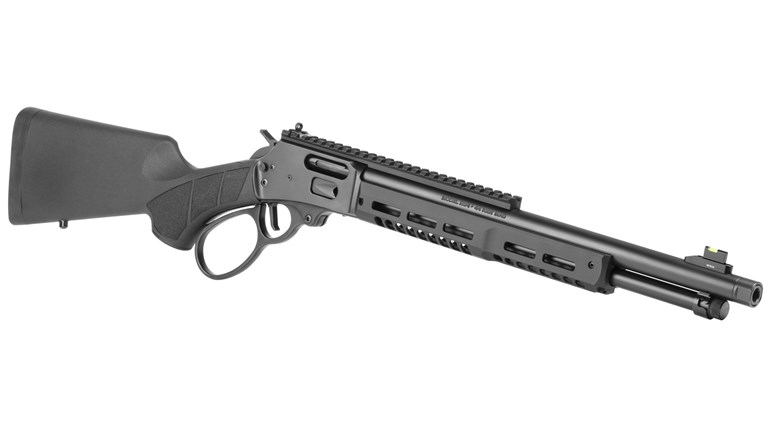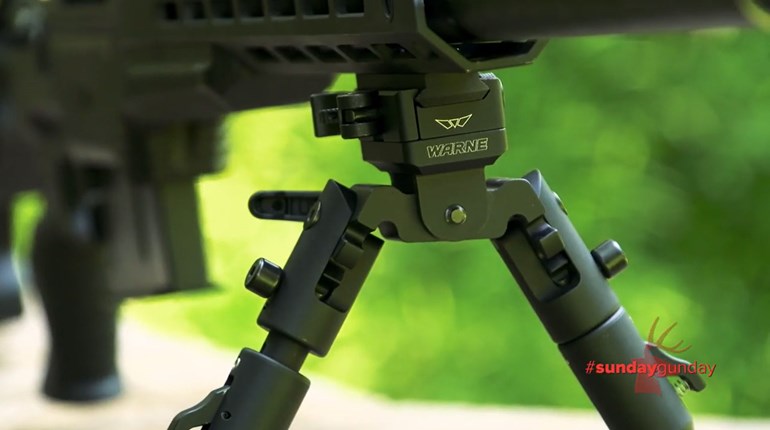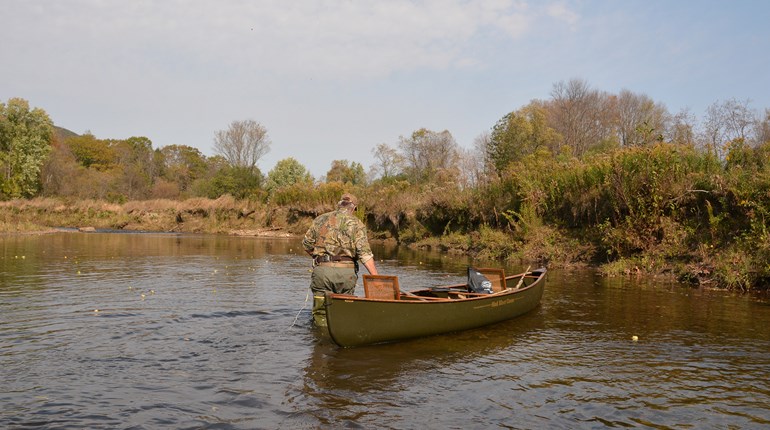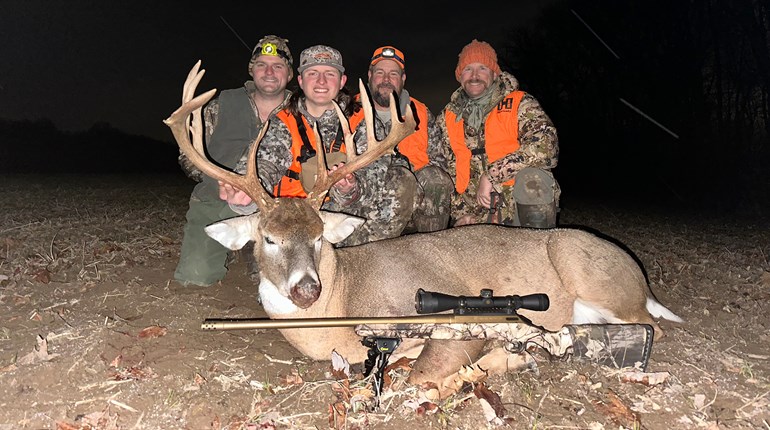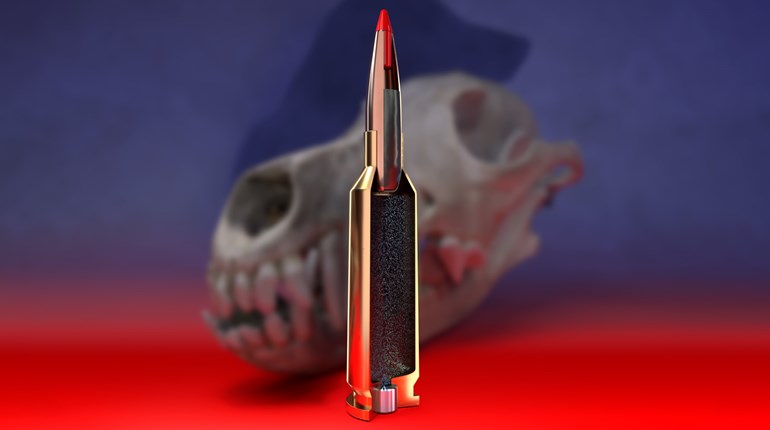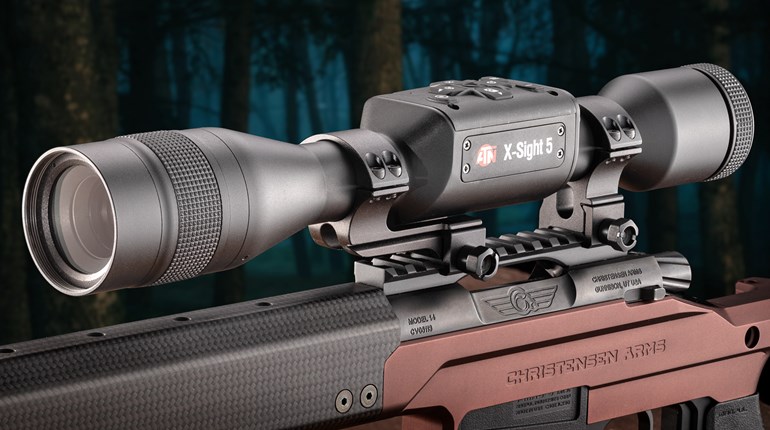Hang on, this is going to get bumpy.
I understand that my 47 years of big-game hunting, much of it as my profession, and my life’s work with ballistics and terminal bullet performance don’t give me the credibility of this week’s newest blogger, but I am going to talk a little about something that has been bugging the heck out of me lately.
The rise in popularity of hunting with ARs crashed head-on into the population explosion of wild hogs in this country. That has led to a lot of instant experts and a lot of bad information being put out about hog hunting.
I understand that opinions are like armpits, that everybody has one and they all stink (except mine). My opinion on the topic is this: The .223 Remington and .300 Blackout are outstanding cartridges, but not for hunting hogs. Sure, I know they kill a lot of hogs every year. So what? When we raised hogs we killed them with a .22 LR, but that hardly makes it a hog cartridge. A few years back, I killed a big boar hog in Texas with a .17 HMR. It does not make it an acceptable hog cartridge. In fact, I can tell you without a hint of doubt that it is not even close to a viable hog cartridge.
The .223 Remington and .300 Blackout are better choices than the rimfires but, in my never humble opinion, they are still underpowered to be serious and ethical hog-hunting cartridges. Yes, I know all about the newer high-performance bullets, and yes they help, but they cannot alter the laws of physics. These cartridges simply lack the horsepower needed.
I have used them both to shoot several hogs, so I base my opinions on experience, not theory. I know that relying on years of experience is a flawed strategy in today’s keyboard ballistic wars, but I simply don’t have time to surf the Net to form new opinions.
Proponents of smaller cartridges in the AR will always resort to the argument, “It’s all about shot placement!” Well, duh, all hunting is about shot placement. But sometimes that’s not enough.
Hogs are tough and they don’t leave much of a blood trail, particularly if the bullet doesn’t exit. What nobody wants to talk about are the wounding losses. “It’s just a hog, who cares?” one guy shouted at me after I got too close to the truth.
Well, I care.
We have an obligation with any game to reduce the possibility of wounding loss as much as possible. Elk, deer, hogs or coyotes—it makes no difference. Show some respect.
Besides, those arguing for “shot placement” are often arguing for target areas with a high wounding loss probability if the shot is off even a little bit. Head shots are not the answer; they are often the problem. A lot of “misses” result in broken jaws and a horrible fate for the hog. Again, show a little respect. The preferred shot for all other big game is the heart/lung area. It should be with hogs as well.
While the little cartridges might work most of the time, particularly on the smaller hogs that make up most of the population, a smart hunter plans for the worst-case scenario. A big boar hog is one of the toughest critters in North America. They can weigh upwards of 300 or 400 pounds, so bring enough cartridge to handle the biggest boars and the rest will take care of itself.
A big boar hog is nature’s bullet trap and, as with all big game, I prefer exit holes for a lot of reasons. You get a better blood trail for one, but also because an expanded bullet that exits with a lot of retained velocity will create a large wound channel from start to finish. What kills big game is tissue damage, not “dumped energy.”
The AR is an outstanding choice for hog hunting, but only if it’s chambered for the right cartridge. Here are a few AR-15 cartridges that are “right” for hunting hogs. Remember, one of the great things about an AR-15 is you don’t need to buy a new rifle: Any of these uppers can fit on your existing lower.
.30 Remington AR
I am told that I am partly responsible for the new Remington line of ammo called Hog Hammer. Never shy about speaking my mind, I was at the annual Remington Seminar a while back and asked one of the product managers about the possibility of loading Barnes bullets in Remington ammo. For those who don’t know, Remington and Barnes are now both owned by the same parent company, Freedom Group. The Remington guy said they had no plans to load Barnes bullets.
I replied, “You own the company that makes the best hunting bullet on Earth and you are not going to use it in your ammo? That’s one of the dumbest things I have ever heard.” (Diplomacy has never been one of my strong points.)
I guess he listened, and a year later the result is this new line of ammo. I later told him they were limiting their market appeal with the Hog Hammer name because it’s darn good deer, bear, elk or whatever ammo too. I guess I blew my wad with the first idea and “Hog Hammer” remains. But if you see a similar line of ammo in the future from Remington called Buck Hammer, remember it was my idea.
The .30 Remington AR (.30 RAR) is a shortened .450 Bushmaster case that’s necked down to .30 caliber, with a few other modifications including a switch to a small rifle primer. The .30 Remington AR was the first .30-caliber mainstream cartridge designed specifically for the AR-15.
Why do I think the .30 RAR is a viable hog-hunting cartridge but the .300 Blackout is not? Simple: case capacity. The .30 RAR has 83 percent more case capacity, which means it drives similar bullets faster and with more energy. It has over 26 percent more velocity with a 125-grain bullet, which means a 60 percent increase in energy. That means the .30 Remington AR is by far the best factory option in a .30 caliber for hunting big game with an AR-15 rifle.
This cartridge is very close in ballistics to the old .300 Savage, which is well-respected, with a proven history in the field. One improvement is that the .30 RAR has better bullets in factory ammo than the .300 Savage. With the new Hog Hammer load using a Barnes 125-grain TSX bullet at 2800 fps muzzle velocity, the .30 Remington AR is a viable hog cartridge.
The Barnes TSX, all-copper expanding bullet has a reputation for 100 percent weight retention and very deep penetration, which is always an asset when shooting at pork chops on the hoof.
.450 Bushmaster
This is my idea of a hog gun: big, heavy bullets delivered with a lot of energy. The concept used to develop the .450 Bushmaster was a semi-auto rifle larger than .44 caliber capable of taking big game out to 250 yards. Hornady developed the ammo, using a rebated rim case. It pushes a 250-grain FTX bullet with a muzzle velocity of 2200 fps from a 20-inch barrel. Bushmaster designed the rifle on an AR-15 platform.
Freedom Group also owns Bushmaster, so it made sense that Remington would start making ammo. Considering that this is one of the best hog-hunting cartridges in the AR, it made sense that they would make it in the Hog Hammer line.
The Barnes 275-grain XPB bullet has a muzzle velocity of 2175 fps and 2,758 ft.-lbs. of muzzle energy. My guess is it was this cartridge that inspired the name “Hog Hammer”—or at least it should have been. I have shot a bunch of hogs with some early engineering samples of the load and it absolutely “hammers” them. Most of those I shot never took another step.
I also shot a water buffalo that weighed more than three-quarters of a ton with the .450 Bushmaster and Remington Hog Hammer ammo. He ran about 40 yards and politely fell in a good place to get a truck to for the trip to the butcher shop. I might note that water buffalo meat is absolutely delicious. If you ever have a chance to try it, do not pass.
.458 SOCOM
The .458 SOCOM was developed for military applications after the fighting in Mogadishu. That battle left a lot of participants disappointed in the performance of 5.56mm NATO, and they wanted some serious, .45-70-class thumping power for the M-16/M-4 style rifles. (Take note: Hogs tend to run a little bigger and a lot tougher than insurgents. If the .223 is not enough gun for them, it’s not enough for hogs either. Just saying.)
The .458 SOCOM (which means Special Operations Command) uses a lengthened .50 A.E. case with a rebated rim that’s necked down for a .458-inch bullet. One big advantage with that .458 diameter is there is a wide selection of bullets on the market.
Cor-Bon has ammo using the Barnes Tipped DPX 300-grain bullet developed for this cartridge. The muzzle velocity is 1825 fps. They also have a 300-grain hollow-point at 1900 fps and a 400-grain jacketed hollow-point at 1600 fps. These velocities are from a 16-inch barrel.
Southern Ballistic Research offers 21 different loads for the .458 SOCOM with bullets ranging from 100 to 500 grains. There are a lot of hunting bullets including the 300-grain and 350-grain Barnes bullets.
It might have a military background, but in a rifle like the Rock River LAR458, the .458 SOCOM is a hog-killing machine.
.50 Beowulf
I like cartridges that hit hard and remove all doubt and the .50 Beowulf epitomizes that concept. With a 325-grain bullet at 2000 fps, there is never any doubt when you hit something.
Bill Alexander of Alexander Arms was one of the pioneers of big-game hunting cartridges in AR-15s. He developed this cartridge and named it after Beowulf, a legendary warrior who slayed the undefeatable Grendel by ripping off his arm. (Now that’s bad!) The next day Beowulf battled Grendel’s mother, a horrible monster, and killed her by cutting off her head with a mighty sword from her armory. A sword, of which it was said, “no other man could have hefted in battle.” Years later, in his old age, Beowulf fought and killed a dragon.
After killing monsters and dragons, do you seriously think any hog stands a chance against Beowulf?
The .50 Beowulf was the first of the AR-15 specific, ultra-big-bore cartridges to be offered by an AR manufacturer. It is based on the .50 A.E. case, but in a longer version. The case has a severely rebated rim so that it fits a bolt head designed for the 7.62x39mm cartridge, which works well with an AR-15.
From a 24-inch test barrel the .50 Beowulf pushes a 325-grain bullet to 2010 fps and 2,916 ft.-lbs. of energy at the muzzle. The 400-grain load has a muzzle velocity of 1875 fps and 3,123 ft.-lbs. The bullet is half an inch in diameter and can expand to more than an inch.
Compare that to a 55-grain, .223 Remington. The 325-grain Beowulf has almost 500 percent more bullet weight and an unexpanded diameter that is larger than a .223’s fully expanded bullet. Once it has expanded, the Beowulf bullet has a 123 percent larger frontal area. Not to mention that the Beowulf has about three times more energy than the .223 Remington.
Even from the stubby 16.5-inch barrel on my rifle, the .50 Beowulf loads are moving at 1950 fps for the 325-grain and 1,800 fps for the 400-grain. Considering the 7.5-inch difference in barrel length, the velocity loss is minimal. Clearly this is a cartridge that is well suited to the shorter barrels often seen in the big-game versions of guns made on the AR-15.
Besides, there is something very comforting about hunting hogs with a gun that has a barrel with a hole in it the size of a road culvert.
AR-10 Rifles
When you move up to the larger AR-10 rifle, the hog-hunting options expand. This rifle is designed for the .308 Winchester, so any variant of that cartridge will run well in the gun. While they will work, I am not a fan of sub .30-caliber cartridges for hog hunting, so I would start with the .308 Winchester. I have hunted hogs a lot with my DPMS .308 Winchester, mostly with Barnes TSX bullets, and I have zero complaints.
My first choice, though, for shooting hogs with this style rifle would be the .338 Federal. It is one of the best hog cartridges offered in any gun and particularly in an AR. Federal and Fusion offer a wide range of ammo options, but I am partial to the 200-grain Fusion load with a muzzle velocity of 2700 fps. Some years back I used an early engineering sample of this ammo to shoot my best-ever black bear, and have nothing but confidence for its use in hunting hogs.
My choice of rifle would be the incredibly accurate J.P. Enterprises LRP-07H Long Range Precision Hunting Rifle. With the Fusion load, three-shot 100-yard groups averaged .71 inch. The best group was a ragged hole that measured .3 inch.



























